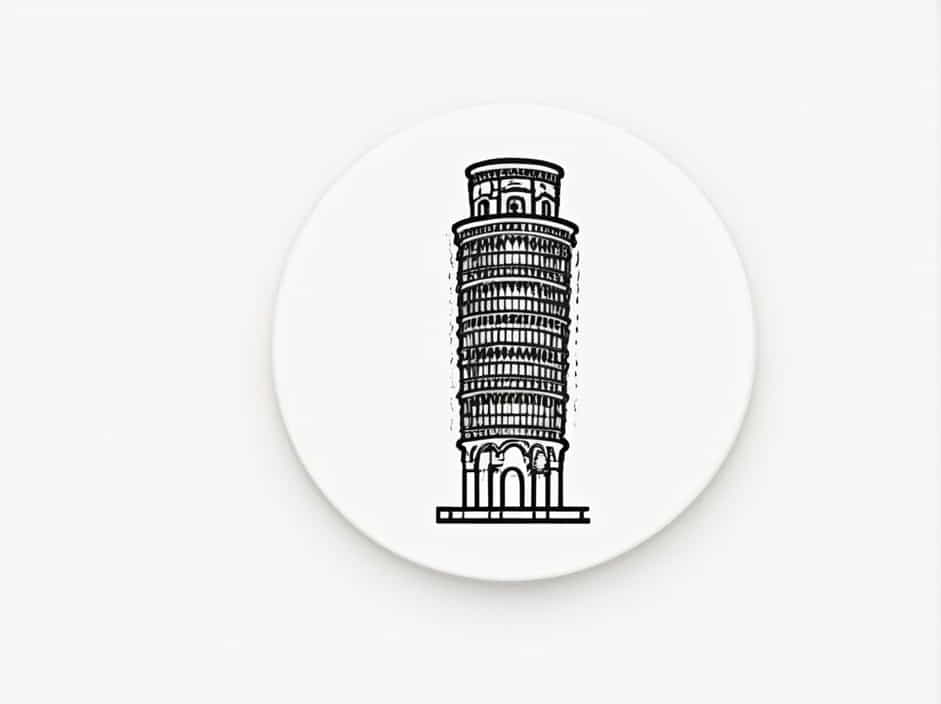The Leaning Tower of Pisa is one of the most famous landmarks in the world, known for its tilted structure that has puzzled engineers and visitors for centuries. But why does it lean? The answer lies in a combination of unstable soil, flawed construction, and centuries of engineering efforts to prevent its collapse.
In this topic, we will explore the reasons behind the tower’s tilt, its history, and the efforts to stabilize it, as well as some interesting facts about this architectural wonder.
The History of the Leaning Tower of Pisa
1. Construction of the Tower
The Leaning Tower of Pisa was designed as a bell tower for the Pisa Cathedral in Pisa, Italy. Construction began in 1173 and continued in several phases over nearly 200 years.
The tower was meant to stand vertically, like other bell towers, but problems arose soon after the construction of the first few stories.
2. The Tilt Begins
By the time the second story was built, engineers noticed that the tower was starting to lean. The problem was caused by the soft, unstable soil beneath the structure. Pisa is built on a mix of clay, sand, and silt, which was unable to support the weight of the heavy marble tower.
The tilt worsened as construction progressed, and efforts to correct it during later phases only made it more unstable.
Why Does the Tower Lean?
1. Unstable Foundation
The primary reason for the tilt is the weak foundation. The tower was built on soft, shifting ground that couldn’t handle the weight of the structure.
Engineers at the time didn’t fully understand soil mechanics, so they unknowingly constructed the tower on a poor foundation. This caused one side to sink more than the other, leading to the iconic tilt.
2. Uneven Settling of the Ground
As the weight of the tower pressed down, the ground beneath it compacted unevenly. Since one side had slightly firmer soil than the other, it settled at different rates.
This gradual sinking caused the lean to increase over time, making the tower’s position more unstable with each passing year.
3. Flawed Construction Techniques
Engineers in medieval times attempted to correct the lean by building the upper stories at an angle. This means the tower isn’t just leaning—it’s also slightly curved. However, this correction wasn’t enough to stop the tilt from worsening.
Attempts to Fix the Lean
1. Early Attempts to Stabilize the Tower
For centuries, architects and engineers tried to find ways to stop the tower from collapsing. Some of the early attempts included:
- Adding counterweights to balance the structure
- Adjusting the upper levels to compensate for the tilt
- Reinforcing the foundation with additional materials
None of these solutions provided a permanent fix, and the lean continued to increase.
2. Modern Engineering Efforts
In the 20th and 21st centuries, engineers used advanced technology to prevent the tower from falling. Some of the most effective solutions included:
- Soil extraction: Removing soil from the higher side to allow the lower side to rise
- Anchoring the foundation: Strengthening the base with underground supports
- Structural reinforcement: Using steel cables to provide extra stability
These efforts successfully reduced the tilt by about 17 inches and ensured that the tower would remain standing for at least another 200 years.
Interesting Facts About the Leaning Tower of Pisa
1. The Lean Has Changed Over Time
The tilt of the tower was originally around 5.5 degrees, but after stabilization efforts, it was reduced to about 4 degrees. This may seem like a small change, but it significantly improved the tower’s stability.
2. It Took Nearly 200 Years to Complete
Construction of the tower was delayed multiple times due to wars and financial issues. It wasn’t completed until 1372, almost two centuries after it was started.
3. It Has Survived Several Earthquakes
Despite its instability, the tower has withstood many earthquakes over the centuries. Scientists believe that the same soft soil that caused the tilt also helps absorb seismic shocks, preventing the tower from collapsing.
4. Galileo Used It for His Experiments
Legend says that the famous scientist Galileo Galilei conducted gravity experiments from the top of the tower. He supposedly dropped two objects of different weights to prove that they fell at the same speed.
5. Tourists Can Still Climb the Tower
Despite its lean, visitors are allowed to climb the 294 steps to the top of the tower. The view from the top provides a unique perspective of Pisa and the surrounding area.
The Leaning Tower of Pisa leans because of unstable soil, a weak foundation, and construction mistakes made centuries ago. However, thanks to modern engineering, the tower has been stabilized and remains one of the world’s most famous architectural wonders.
Today, the Leaning Tower of Pisa stands as a symbol of resilience and ingenuity, attracting millions of visitors each year who marvel at its unique tilt and historical significance.
